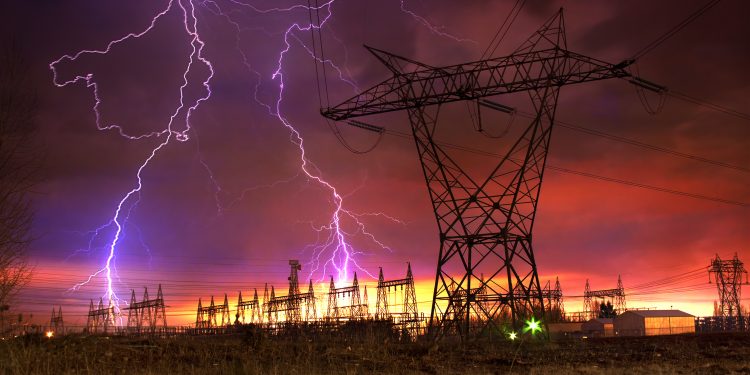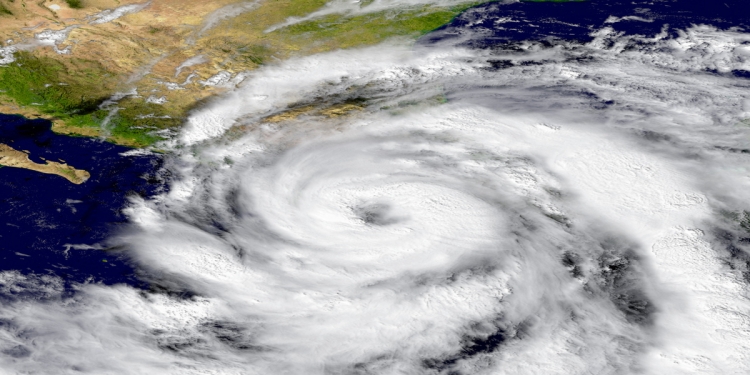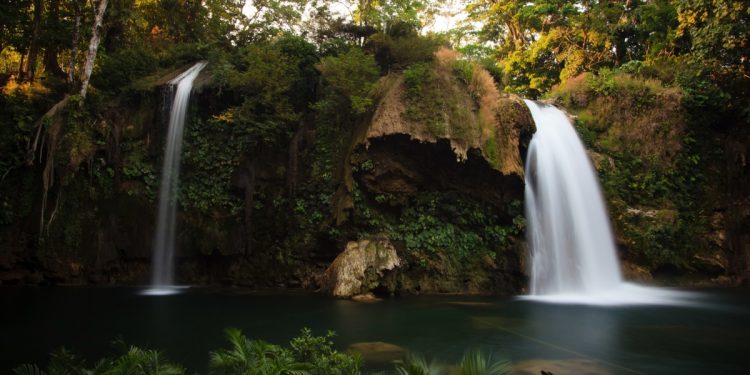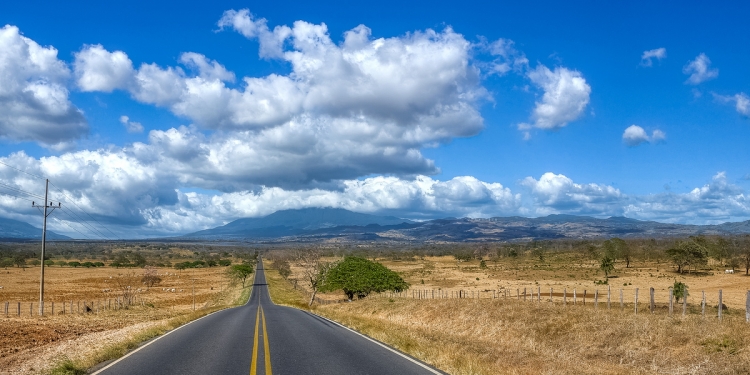A key aspect of learning to live well in Mexico includes adapting to and finding enjoyment in the local climates and environment all year-round. Mexico’s rainy season, that typically begins during the late spring and ends during mid-fall, brings refreshment, color, and delightful floral scents to Mexico’s air and landscapes—as well as some challenges to cope with.
This article shares practical tips and insights about how to live well and enjoy the rain season in Mexico, helping you to make the most of what is an extraordinary season that brings dramatic rainstorms and renewed life and vibrancy to the entire natural environment that surrounds you here.
Eagerly awaiting the return of Tlāloc
Tlāloc, the Aztec god of the rain, water, and fertility (from the Náhuatl, ‘He who makes things sprout’) was worshipped as guardian of the divine gift of rainfall that refreshes and brings life and continuity to the land and all depending on it.
Most people who live in Mexico eagerly await Tlāloc’s return after the long dry season that begins around October and can be seen and felt in earnest by January. By late April or early May, when the dearth of moisture makes the air feel brittle, and the occasional storms that roll in —albethey welcome— fail to bring substantial relief, the anticipation levels heighten, especially in the years when the rains may arrive ‘later’ than expected.
The seasonal tipping point
You might notice subtle shifts in the atmosphere in weeks and days leading-up the return of the rains: an elusive smell of moisture, a slight dip in temperatures, a sweeter fragrance in the early morning air before the sun’s heat takes hold.
The reappearance of the rains may also be preceded by a series of ad-hoc windstorms. And then a day arrives when the rains return in earnest. When they do, another transition period begins from dry to wet, although the flora respond much more quickly to the return of the rains than they do to their departure.
Typically, seasonal rainstorms are introduced by claps of loud thunder rolling-in over the mountain tops as heavily laden storm clouds gather overhead. The wind picks up and drops abruptly, yielding to dramatic torrential downpours that gift immediate respite to the land. In the early part of the rainy season, these storms help to return corn-yellow grass to emerald green and saturate the air with moisture that comprehensively settles the dust and dander, causing the flora to flourish with a joyful energy in a way that all the gardeners’ hoses, watering cans, and sprinklers can never accomplish.
For those who have lived in Mexico for a while, experiencing this tipping point between the dry season and the return of the drenching rains helps to bring into focus the natural cycles which greatly influence these lands far beyond the dust and flora, and serves as a reminder to all that we must pass through the challenges and irritations of a long dry spell to better appreciate the divine gift of refreshing rain.
The feel of a remarkable change in the air
The dust and dander, which are virtually unavoidable during the dry season, become almost immediately settled after the first two or three major rainstorms of the season.
The landscape changes color from yellow and brown to varying bright hues of green, orange, red, blue, violet, pink and white as trees redress their branches, shrubs blossom, and their flowers burst open to reveal the full splendor of their being.
The unmistakable scent of moistened soil is a sure sign that the dry season is passing; the early morning air —that felt mostly dry for months— now smells refreshed and carries sweet and subtle scents of the flora in its light breeze, especially after the drenching night rains, which tend to arrive midseason, sometime in July in most places, and pass leaving most mornings to break bright, sun-filled and distinctively refreshed.
When an afternoon rainstorm passes, the evening or night air is typically left fresh and cooled. It’s unusual for a heavy daytime rainstorm to last more than two or three hours —prolonged rains are usually caused by a tropical depression temporarily passing through the region— and most evenings unfold feeling fresh and accompanied by lingering subtle fragrances of flora in the air.
An ideal season to enjoy the great outdoors
Mexico offers visitors and residents a unique opportunity to enjoy different perspectives during the rainy season, especially when you’re visiting areas of outstanding natural beauty, for example, the Copper Canyon. the southern state of Chiapas, and the Yucatán region.
The rains bring color and vibrance to landscape, cause the flora bloom, and the to rivers to swell abundantly with rainwater that also feed some spectacular waterfalls.
Learn more about nature and adventure experiences in Mexico.
Gardeners rejoice in the rain season
As we mentioned in the article about living well in the dry season, gardeners spend a lot of time between January and May watering their plants in an effort to keep them from wilting and dying; some also attempt to keep their grass from turning corn-yellow, perhaps by means of a sprinkler system.
When the rains return, you’ll notice that the flora respond quickly. Corn-yellow grass, thinned and made sparse by months without water, turns emerald green within a couple of weeks; and by summer the grass recuperates its full form and volume.
For those who have homes in Mexico situated on larger properties with tended gardens, or condo units with extensive landscaped areas surrounding them, the rains alleviate the constant call for manual watering, and replenish water cisterns that for months were being constantly drained, and requiring replenishment with additional water delivered by truck using local ‘pipas.’
Within a month of the first major rainstorm of the season, gardens become transformed in ways that hosepipes, watering cans, and even the most sophisticated sprinkler systems can never match. Gardeners’ attentions then turn to pruning, cutting, and trimming what appears to be unbridled growth; accompanied with a regular mowing schedule for those with grass lawns.
Water supply in the rain season
The ways in which water is supplied to your home in Mexico will depend on where the property is situated. Many regions across Mexico experience some form of water scarcity during the dry season, although the scarcity is relieved almost entirely when the rains return.
Water deliveries
The dry season is the high trading period for the “Pipas”—tank trucks selling potable water. When the rain season returns, these trucks are usually parked-up and left largely unused between June and September.
Properties that are not supplied by some type of mains water system and rely heavily on water delivery from the pipas, are especially grateful for the return of the rainy season, that dispenses with their need to buy copious amounts of water brought by trucks, and the rains also quickly refill water storage cisterns situated on the property.
Refilling water cisterns
Regardless of whether your Mexican property is served by a mains water system, a local communal water network, or by a combination of water truck deliveries and rain collection, it’s likely to have a cistern onsite that stores water on the property. This water is either pumped up to a roof tank (to create a ‘gravity pressure’ system) or properties might have a hydro-pneumatic pump installed that pressurizes the water in the pipes without the need for it to be pumped to the rooftop.
Properties that are fed by mains or communal water systems don’t tend to collect rainwater (some might); however, all properties that rely on water from truck deliveries ought also to have a rain collection system in place. When the rains return, they are so are so abundant that two or three heavy storms will easily refill 100,000-liter (c.26,000 US gallon) cistern with the help of a suitable rain collection scheme installed on the property.
Practical issues related to the rain season
Some tourists choose to avoid Mexico during the rain season, and ‘snowbirds’ —part-time residents who overwinter in Mexico— tend to miss the rainy season, which is lamentable in our view as the rain season brings life and abundance to the local environment that you’ll never experience in the dry months.
The rains also bring with them some challenges, especially for residents. These are readily mitigated and, while they can cause some inconvenience, the challenges are easily outweighed by the benefits the rain season brings.
Proliferation of mosquitoes
Although mosquitoes don’t vanish entirely during the dry season, they do proliferate, and noticeably so, during the rainy season—as the females need a combination of moisture and iron from animal blood to breed.
A key matter to be mindful of during the rainy season is to ensure that you don’t allow stagnant pools of water to accumulate on your property, as these provide perfect breeding places for mosquitoes. Our article about dealing with mosquitoes in Mexico offers additional detailed and practical advice.
Managing your swimming pool
If your property (or condo complex) has a swimming pool, the rain season and summer high-temperatures can be the cause of additional algae and other living organisms to form and grow inside the pool.
Well-tended natural pools (those that use salts and flora instead of chlorine and other chemicals) ought not to be affected when they are properly managed. Most people however use chlorine and other chemicals to regulate the pool’s water and keep it clean, clear, and free of algae—and algae spores which filtering alone cannot eradicate.
The period between the dry and wet seasons (April and May) can be especially challenging to maintain swimming pools. Pool owners tend to see the proliferation of algae build-up at this time and usually need to use a combination of chemicals and vacuuming to keep the pool crystalline clear.
If you hire someone to tend your pool, they may have the knowledge and experience to manage this; if you are maintaining your own pool, you may refer to resources online for advice if the algae build-up overtakes your pool—or hire someone locally to assist you.
Our article about enjoying and managing your swimming pool in Mexico contains further detailed insights and advice.
Electricity power cuts
The onset of a rainstorm is often preceded (or accompanied) by wind, and some of these windstorms, which might also be accompanied by lightning storms, can cause issues at local electricity sub-stations, or hit transformers and cables—which are most usually strapped to poles, not buried underground. Thus the rainy season can bring an increase in the frequency of power cuts, which can also affect communications, especially internet services. Our article about dealing with electricity power cuts in Mexico offers additional insights, and practical tips.
Drying laundry in the rainy season
Although some people use a tumble dryer (that requires a combination of electricity and natural gas to operate) Mexico’s exceptionally good weather makes it ideal for air-drying clothes and laundry. During the dry season, it’s easy to become complacent with laundry routines as most days are warm and bright, and clothes dry in a short time, especially if there’s a light breeze, anytime of day you hang them.
When the rainy season returns, you’ll need to alter your laundry routines and hang laundry to dry early in the day as afternoon rain storms can be heavy enough to drench your clothes.
There’s more moisture in the air during the rainy season too, so clothes will take longer to dry, and if a tropical storm passes through your region, you might have to hang clothes under shelter, or indoors. Some people keep a tumble dryer for use during the rainy season, although with a little bit of forward planning (wash and hang your clothes to dry early in the day), air drying clothes is perfectly feasible even during the rainy season.
Beware of flooding and structural damage
Some rainstorms during the rainy season can be very intense—enough to cause flash-floods in localized areas. This can cause flooding in your home, or on roads and local lanes, making driving conditions difficult or treacherous. In exceptional cases, colossal volumes of rainwater falling in a brief period can drench a locality and cause landslides.
An adequate home insurance policy will help you to mitigate the financial costs of dealing with storm damage during the rainy season, including any damage that might be caused to third parties—for example, if a flood undermines a wall on your property, causing it collapse.
Driving conditions in the rainy season
Heavy rainstorms can give rise to a range of risks and difficulties for drivers in Mexico, whether you’re driving through your local village, a city, or on an open highway.
Check your vehicle’s tires
A most common risk for drivers during the rainy season is bald (or balding tires) on vehicles. During the dry season, when the road surface can remain completely dry for weeks or months on end, a slightly balding tire might not be a big risk; but as soon as the rains start, the absence of tread on a tire can create a potentially lethal risk —for you and others— as the surface water that cannot be displaced in the absence of tire tread creates a skid risk, and prevents you from braking effectively. Always check your tire tread, especially before the rain season starts.
Flooding risks for drivers
In Mexico’s rural areas, rivers that swell during heavy rainstorms can cause local roads and lanes near those rivers to flood; if you’re caught out driving in a flash flood, your car may be become flooded and stranded or, in extremis, taken by the surge of a temporary river current.
In cities, flooding can be common when a rainstorm overwhelms the drainage systems available locally; power cuts can cause traffic light systems to fail and contribute to traffic jams; powerlines can fall and create blocks on roadways for a time until the emergency services can attend to repair them.
When you’re driving on open highways, in the wilderness, and other remote areas, heavy rainstorms (and hailstorms) can leave you especially exposed; on remote mountainous highways, mudslides and landslides can bring down trees, rocks and soil that cause the road running through a ravine to become completely blocked until road crews can attend and clear it: on tolled highways, this clearing work can happen quite quickly; on less-traveled remote highways it may take days or weeks.
Detailed advice about driving in Mexico
Our free eBook guide to driving in Mexico offers practical advice for driving safely, and we recommend that your vehicle is properly insured when you’re driving in Mexico.
Hurricane season
Some regions of Mexico are prone to hurricanes, a season that more or less coincides with the rainy season—although the most powerful hurricanes that make landfall tend to happen during the hottest weeks of the year: between July and September.
Although hurricanes mostly affect coastal areas, the storms can cause tropical depressions inland, too—in the form of an extended period of rain or unusually overcast conditions. You can learn more about Mexico’s hurricane season here on Mexperience.
The end of the rainy season in Mexico
Sometime between late September and early November, depending on the region and how the rains manifest in any given year, the rainstorms that began in late spring begin to thin out, and one day, cease altogether—akin to someone switching off a faucet. Tlāloc, having discharged his natural duty to make things sprout, departs, and yields to the onset of the dry season.
The end of the rain season brings a marked change to the landscapes as well as life patterns across Mexico, although the effects of an ending rainy season are far more graduated than those which happen when the rains return.
During October through December, the bountiful amount of moisture that has accumulated in the ground keeps the flora active and the air feeling still fresh for a while. However, by mid-December, the onset of winter heralds a change that can be sensed and felt; and by mid-January, the landscape and all who dwell upon it begin to enter, once again, into the ‘long dry’ season of the winter and early spring.
The change of season between the rains and the dry, and back again, is all part of a wonderful and divine cycle that contributes to making Mexico one of the most fascinating and enjoyable environments to enjoy being in.
Discover Mexico’s seasons
Mexperience helps you to discover Mexico’s diverse topography and climates as you make your lifestyle and leisure plans:
- The rain season begins in May or June.
- The dry season begins around October or November.
- Browse the latest articles about climate and weather in Mexico
- Discover Mexico’s climate through the seasons
- Learn about how Mexico is a land of three lands
- Check individual location guides here on Mexperience for climate by location.
- You can get full details about the weather by region and season on our guide to climate in Mexico.
Mexico in your inbox
Our free newsletter about Mexico brings you a monthly round-up of recently published stories and opportunities, as well as gems from our archives.


















